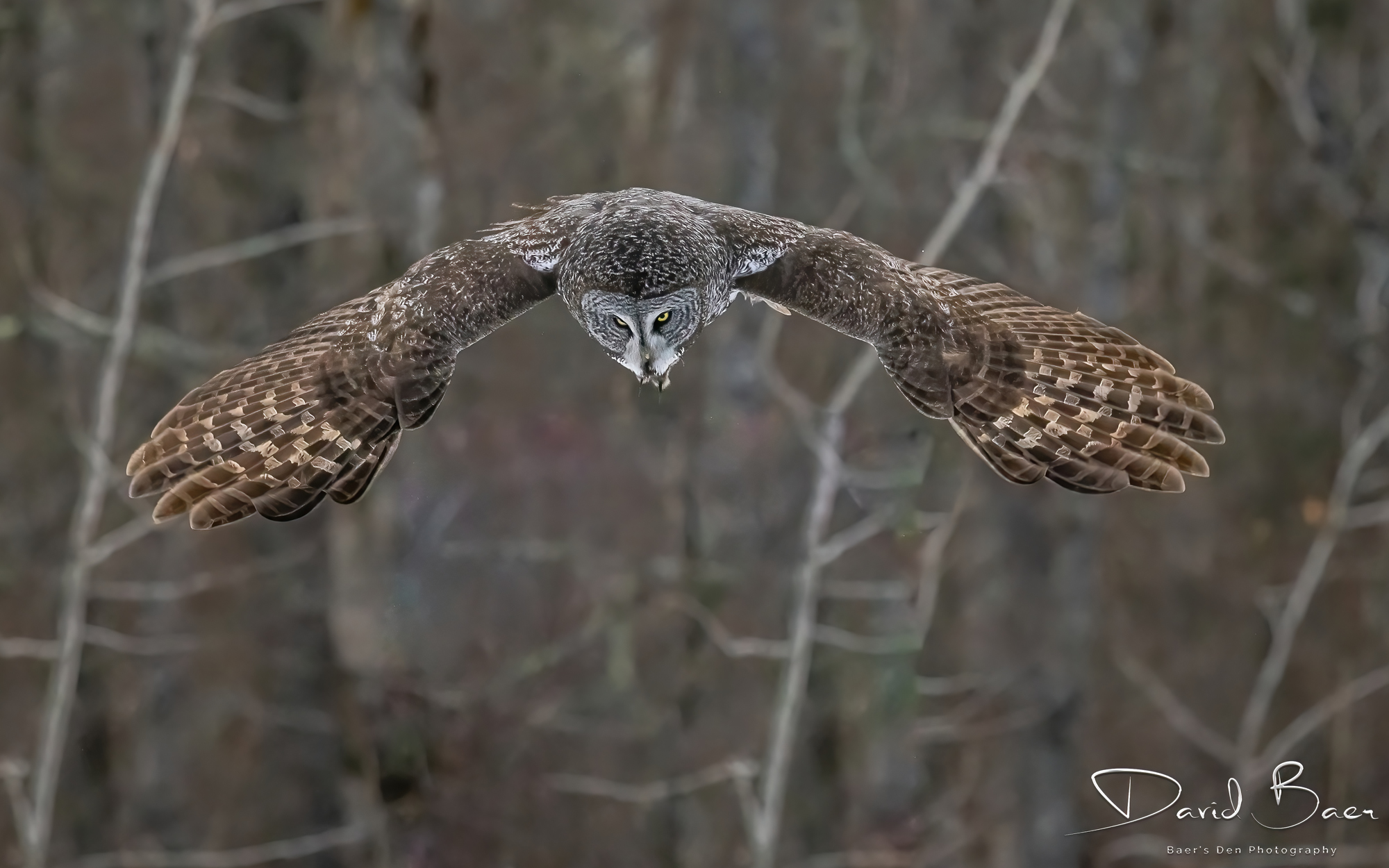
Winter Birding

Great Gray Owl photo by David Baer
Winter birding along the Pine to Prairie International Birding Trail can be very rewarding. Grab your winter coat, gloves, hat and boots before bringing out your optics. The birds and wildlife you can see in the winter landscape are well worth it!
The southern anchor of the trail is Fergus Falls. Traveling north along Hwy 59, you’ll reach sites near Pelican Rapids and Detroit Lakes. These rural areas include miles of farm fields. In fields with corn stubble here and to the north, look for Arctic visitors such as Snow Buntings, Common Redpolls, Horned Larks and Lapland Longspurs. These hardy birds prefer the wind swept fields to search for left over seeds. Although often sought after in the early spring months, prairies along the trail may offer looks at Greater Prairie Chickens in the winter months.

Trumpeter Swans photo by Wayne Runningen
In areas with open water at lake and river sources during the winter, Trumpeter Swans may often be seen feeding or flying from one location to the next. During the coldest days, the swans may be observed resting on the ice near open water. Look for the birds at lake and river inlets and outlets with open water such as the Pelican and Otter Tail Rivers and the levy in Fergus Falls. You may also be treated to Bald Eagles perched atop hardwood trees watching for fish in the open water.
Those searching for woodpecker species while winter birding will certainly be satisfied. Pileated Woodpeckers are seen along much of the trail where trees are abundant. Hairy and Downy Woodpeckers frequent suet feeders or forage on tree trunks. Those looking for the Black-backed Woodpecker should check out the lowland conifer bogs to the north in Beltrami Island State Forest.
Snowy Owls may be seen intermittently along the Pine to Prairie Trail. In the Fergus Falls area, look for them along State Hwy 210 west from Fergus Falls to Wahpeton ND. In the Detroit Lakes area, Snowy Owls have been seen west of Hwy 59 between Hamden Slough National Wildlife Refuge and Callaway. As you travel north from Detroit Lakes along the trail, the more likely you are to see the owls, often perched atop a utility post. It’s important to remember the owls have flown a huge distance from the north and often are hungry and trying to conserve energy. With this in mind, keep your distance so as not to disturb their hunting or cause them to use precious resources.

Northern Hawk Owl photo by Lisa Hupp, USFWS
Sites along the northern stretches of the trail, such as Thief River Falls and Roseau provide opportunities to see boreal birds. Roseau County’s conifer forests have been known to host Great Gray and Northern Hawk Owls. Beltrami Island State Forest attracts Boreal Chickadees and Gray Jays to their pine trees. Where aspen and birch are present in scrubby wetlands, watch for Sharp-tailed Grouse foraging on the buds while winter birding. Other conifer-loving species you could see in conifer forests include Red Crossbills feeding on cones at the tops of pine trees or Pine Grosbeaks feeding along the road. You may even spot a Spruce Grouse while winter birding!
Boreal birds adding a pop of color at feeders and fruit trees, such as crab apple, include Evening Grosbeaks, Pine Grosbeaks, Bohemian Waxwings and Common Redpolls.

Ermine photo by David Baer
See eBird Trail Tracker for the latest bird sightings. As a bonus, you may be treated to wildlife along the trail such as fox, coyote, porcupine, river otter, ermine, fisher, mink and in the northern-most sites, moose, lynx and wolf.
For additional information contact:
Prairie Wetlands Learning Center, Fergus Falls: 218-998-4880
Kelly Blackledge, Tamarac National Wildlife Refuge, Rochert (near Detroit Lakes): 218-850-4886
Amy Westmark, MN DNR, Bemidji: 218-308-2641
Charlie Tucker, MN DNR, Red Lake WMA, Norris Camp, Roosevelt: 218-783-6861